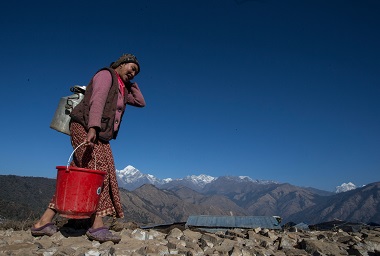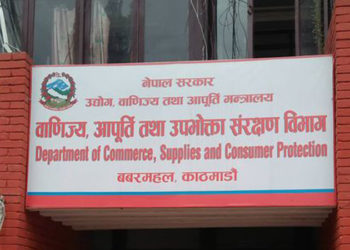LONDON: Fetching water from far-off areas can heighten the risk of death and might lead to several other adverse outcomes too. This has been revealed in a one-of-its-kind study conducted by two researchers from the United Kingdom’s University of East Anglia.
The research, involving 2.7 million people from 41 countries, used data from the Unicef multiple indicator cluster survey. The study has claimed that it is the first to analyze the ‘relationships between water carriage, access to clean drinking water, sanitation and maternal and child health’.
The study, which is being printed in the upcoming issue of the International Journal of Environment Health and Hygiene, was conducted by the university’s Jo-Anne L Geere and Paul R Hunter.
Listing a series of outcomes of water fetching from ‘off-plot’ areas, the children of the adults are at a greater risk of death, the study said. Explaining this, the study pointed out that children of such adults were more likely to be left alone at home for longer durations during which, they could suffer from an accidental injury and would also be exposed to lesser parental care.
“In Ethiopia, Gibson and Mace (2006) found that when women’s work of water fetching was substantially reduced because of access to tap stands much closer to home, the monthly risk of child death was 50 percent lower among children of the women with access to the new taps,” the researchers have said.
The second disadvantage is associated with the children who themselves fetch water as they are more prone to diarrhea.
“The increased odds (10–13 percent) of children under five having diarrhea in households where children fetch water compared to households that do not, could simply reflect differing water quality from different source types as reported by Esrey (1996), and that children fetching water away from their home are more likely to be using an unimproved source, and are therefore at more risk of diarrheal disease through consumption of contaminated drinking water,” the authors wrote.
Their findings suggested that health benefits were associated with a high percentage of households within a geographic area using improved sanitation. “More than 60 percent usage is associated with reduced diarrhea and acute undernutrition, and more than 80 percent usage is associated with a reduction of the more severe outcomes of childhood death and stunting,” the study said.
It cited Indian experiences as a case in point. “Clasen et al (2014) found that a rural sanitation program in India, which resulted in a mean 63 percent of households in the intervention villages having a latrine, had only 11 of 50 intervention villages, with less than 50 percent functional latrine coverage at follow up,” the study read.
The program was not effective in reducing exposure to fecal contamination or childhood diarrhea and the authors felt that insufficient coverage and use of latrines were the most plausible explanations for their findings.
“Their findings are similar to those reported by others in India where there was no difference in household or source levels of E. coli contamination between intervention and control groups, and only 41 percent improved sanitation coverage was achieved in the intervention group,” it added, citing Patil et al.
The worst sufferers were the women, and consequently, the children dependent on them. The study said the energy expenditure due to the work of water fetching might be important for nursing mothers, and if it affected breastfeeding behavior, might influence childhood nutrition and therefore children’s weight-for-age (WAZ) or height-for-age (HAZ) scores. Also, their chance of taking up antenatal care was reduced.
“Our study provides evidence that as a modifiable risk factor, providing water on-premises may independently increase the odds of women giving birth in health care facilities, which may be particularly important for women from lower socio-economic groups living in rural areas. We found that uptake of antenatal care is likely to be lower for women from water fetching households when a woman or girl is responsible for collecting water,” the authors argued.
The children of such women are at the receiving end because women face a classical ‘Hobson’s choice’ as they must obtain water from off-plot sources, and then choose to either leave their child alone or take (often carrying) the child with them along what may be an unsafe route.
(Agencies)









Comment